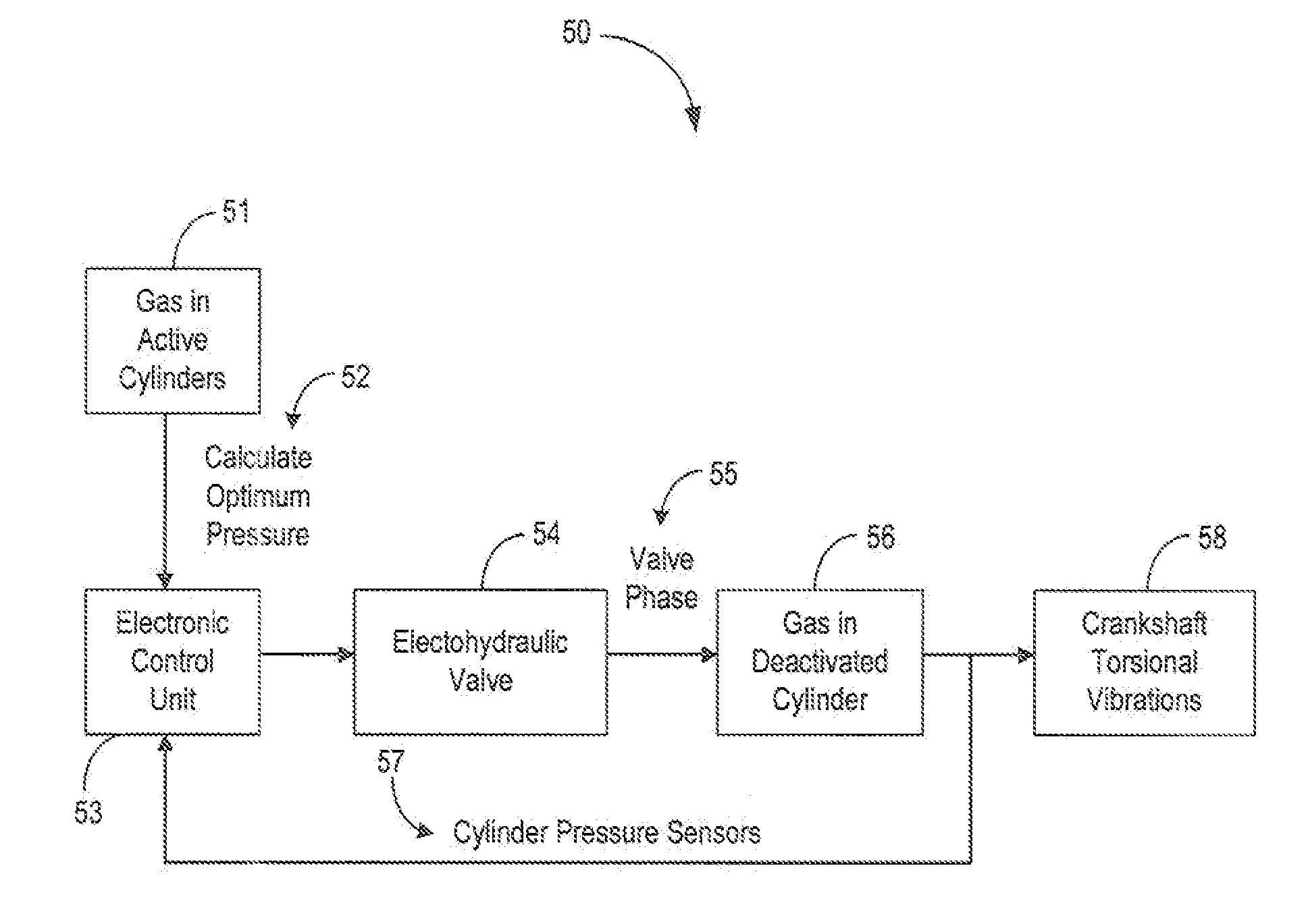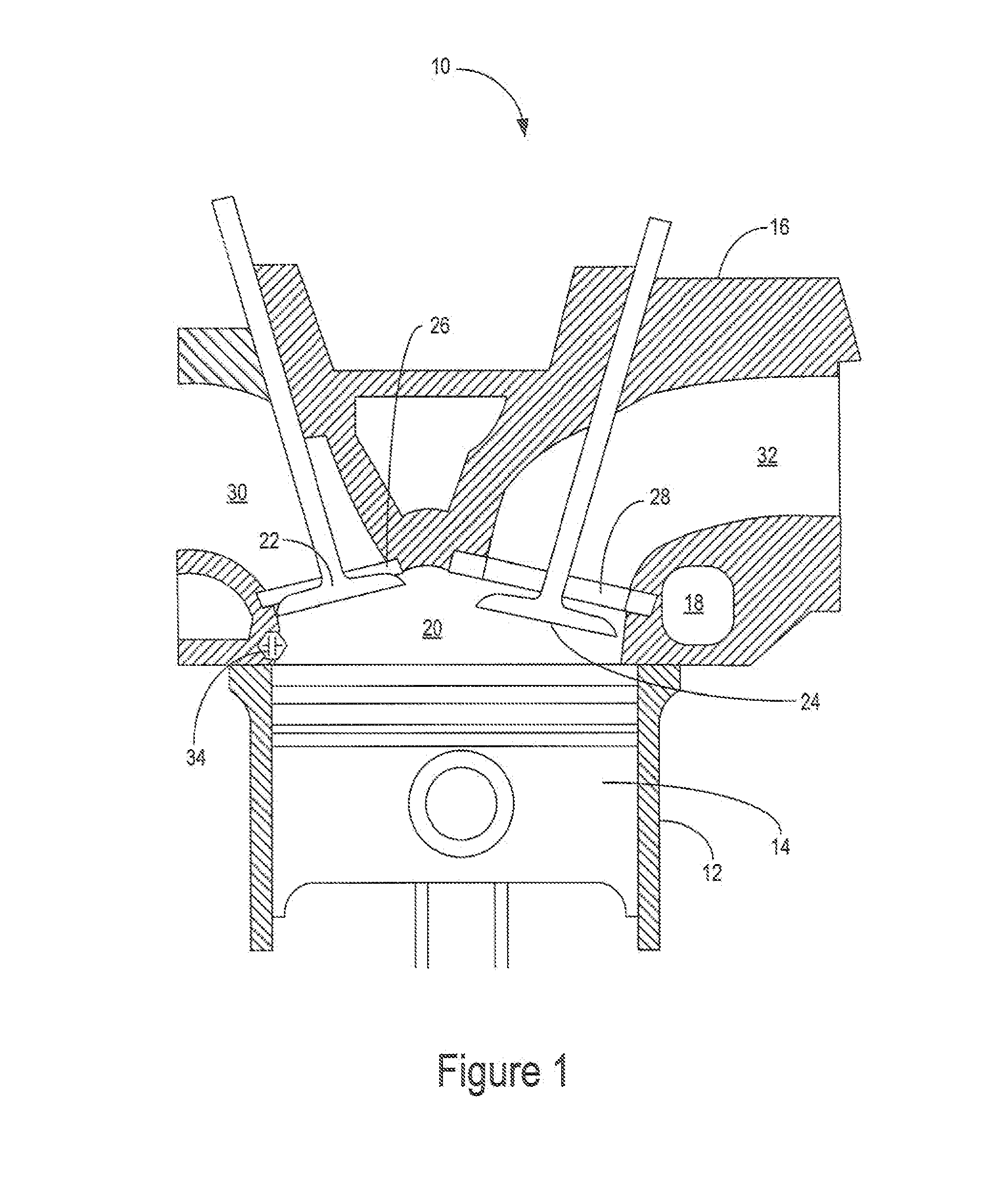Systems and Methods to Control Torsional Vibration in an Internal Combustion Engine with Cylinder Deactivation
- Summary
- Abstract
- Description
- Claims
- Application Information
AI Technical Summary
Benefits of technology
Problems solved by technology
Method used
Image
Examples
Embodiment Construction
[0019]In various exemplary embodiments, the present disclosure utilizes deactivated cylinders in a variable displacement engine to control the torsional vibration of a crankshaft. In a deactivated mode, deactivated cylinders are compressed and expanded by a reciprocating piston, but they are doing no net work and still causing an oscillating torque on the crankshaft. The present disclosure utilizes this oscillating-torque to counter torque from the active cylinders by controlling the gas pressure in the deactivated cylinders. For example, intake and exhaust values can be used to equalize the pressure between the cylinder and ports. The present disclosure computes an optimum gas pressure in deactivated cylinders to minimize total torque fluctuations. This optimum pressure is determined for the specific engine type through either measurement or simulation. For example, a V8 variable displacement engine has an optimum gas pressure that is approximately one-half that of the active cylin...
PUM
 Login to View More
Login to View More Abstract
Description
Claims
Application Information
 Login to View More
Login to View More - R&D
- Intellectual Property
- Life Sciences
- Materials
- Tech Scout
- Unparalleled Data Quality
- Higher Quality Content
- 60% Fewer Hallucinations
Browse by: Latest US Patents, China's latest patents, Technical Efficacy Thesaurus, Application Domain, Technology Topic, Popular Technical Reports.
© 2025 PatSnap. All rights reserved.Legal|Privacy policy|Modern Slavery Act Transparency Statement|Sitemap|About US| Contact US: help@patsnap.com



